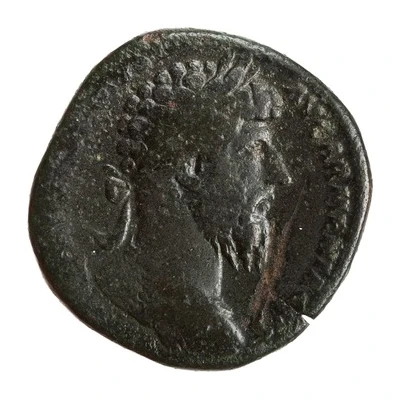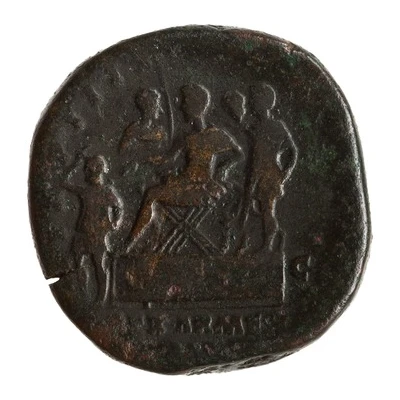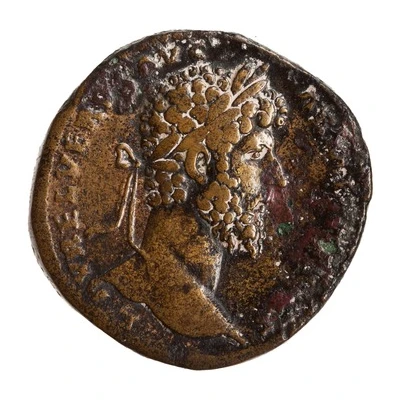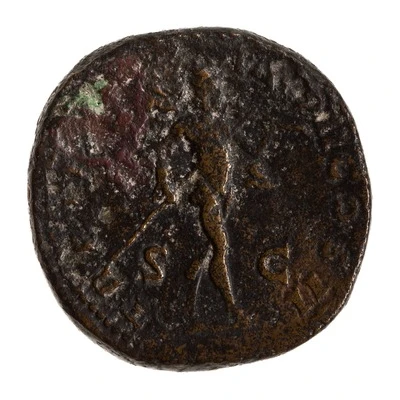


© American Numismatic Society (ANS)
Sestertius - Lucius Verus and Sohaemus of Armenia REX ARMENIIS DATVS IMP II TR P IIII COS II S C
| Bronze | 26.6 g | 33.5 mm |
| Issuer | Rome › Roman Empire (27 BC - 395 AD) |
|---|---|
| Emperor | Marcus Aurelius (Marcus Aurelius Antoninus) (161-180) |
| Type | Standard circulation coin |
| Years | 163-164 |
| Value | 1 Sestertius = ¼ Denarius |
| Currency | Denarius, Reform of Augustus (27 BC – AD 215) |
| Composition | Bronze |
| Weight | 26.6 g |
| Diameter | 33.5 mm |
| Shape | Round (irregular) |
| Technique | Hammered |
| Demonetized | Yes |
| Updated | 2024-10-06 |
| Numista | N#264088 |
|---|---|
| Rarity index | 100% |
Reverse
Lucius Verus, in military dress, seated left on curule chair, set on low platform; behind him on platform, two soldiers; before him on platform, officer standing left, holding rod; on ground before platform, King Sohaemus, raising right hand to his head.
Script: Latin
Lettering: REX ARMENIIS DATVS IMP II TR P IIII COS II S C
Translation:
Rex Armeniis Datus. Imperator Secundum, Tribunicia Potestate Quarta. Consul Secundum. Senatus Consultum.
A king given to the Armenians. Supreme commander (Imperator) for the second time, holder of tribunician power for the fourth time, consul for the second time. Decree of the senate.
Comment
Mass varies: 24.85–29.62 g;Diameter varies: 32–35 mm;
Example of this type:
American Numismatic Society (ANS)
Source:
Online Coins of the Roman Empire (OCRE)
Interesting fact
One interesting fact about this coin is that it features an image of Sohaemus of Armenia, who was a client king of the Roman Empire, on the reverse side. This is significant because it highlights the Roman Empire's practice of appointing client kings to rule over conquered territories, and how these kings were often depicted on coins as a symbol of their authority and connection to the Roman Empire.



